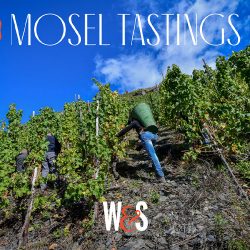2020
After the dry 2019 season, a rainy winter and spring replenished moisture reserves in the soil. For some growers, May showers brought a bout with mildew. Then heat in July and August led to challenges with sunburn after veraison. In the south, around Reguengos de Monsaraz, Esporão reported an early start to harvest before the maturation of the grapes turned more gradual, extending the season. In the north, temperatures cooled in August and the harvest ran from the middle of the month through mid-October. Overall, yields were up 23 percent from 2019 and volume was up 15 percent.
2019
A dry season, 2019 started with a warm spring and early summer, before temperatures moderated for a relatively cool veraison. Harvest started early, at the end of July. In the north, in the hills above Portalegre, the Symingtons reported some rain during August at their vineyard, Fonte Souto, where wide diurnal shifts in temperature sustained freshness in the grapes. The region’s production was down nine percent from 2018. The top reds in our tastings were ripe and bold.
2018
A cold, dry winter led to plenty of rain in spring, when cool weather slowed the progress of the vines. Heat spikes in August combined with dry winds to scald some of the grapes. The heat caused many vines to shut down, delaying maturation. Harvest was two to three weeks later than usual, with some growers reporting significant loss in production while for others the outcome was more generous. After three years of low-yielding harvests, the region was up 23 percent in grapes and 16 percent in wine from 2017. The best of the reds we tasted were both rich and bright, sustaining freshness in spite of the heat.
Click here to return to the Regional Tasting Report on Alentejo.
Joshua Greene is the editor and publisher of Wine & Spirits magazine.
This is a W&S web exclusive. Get access to all of our feature stories by signing up today.



















